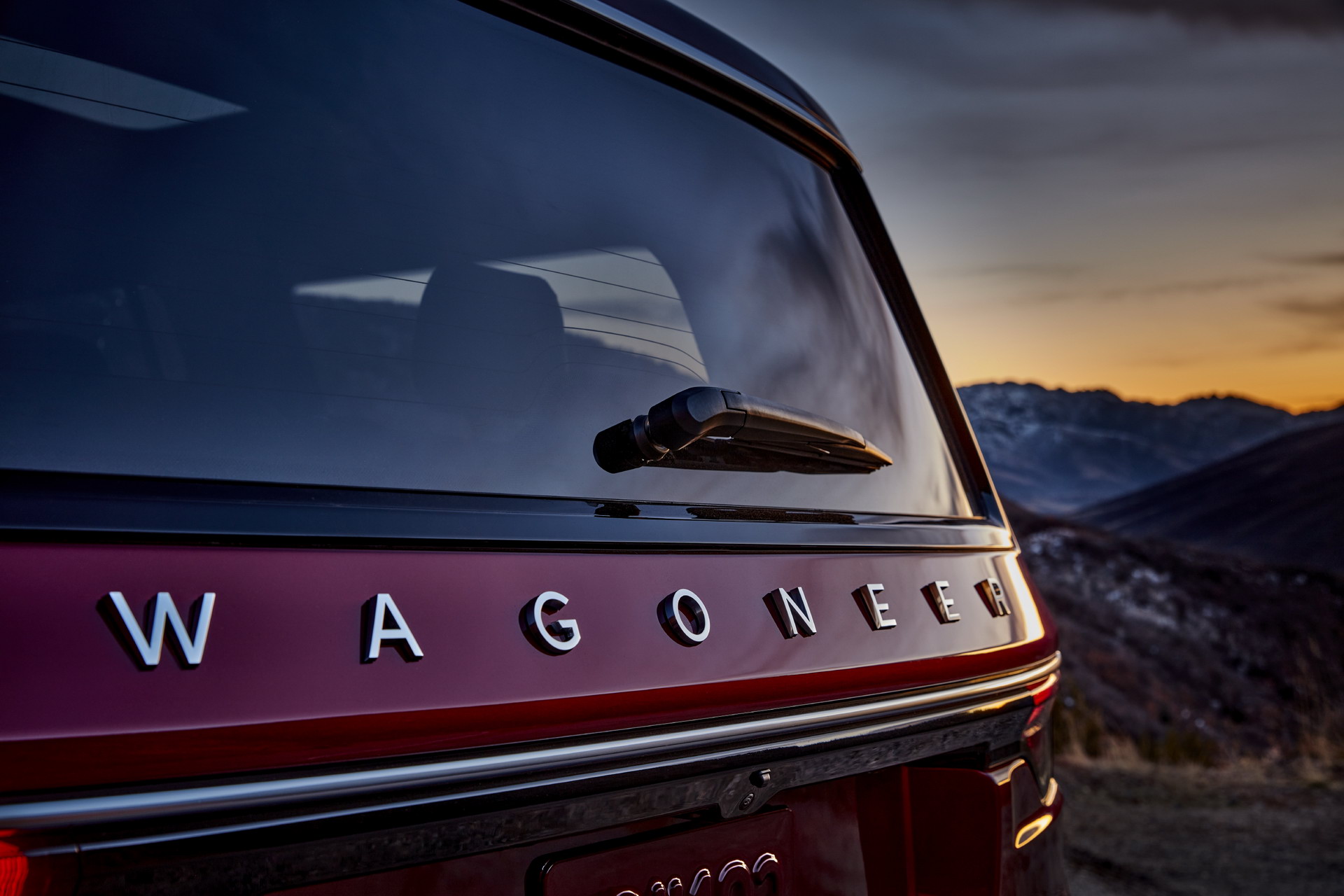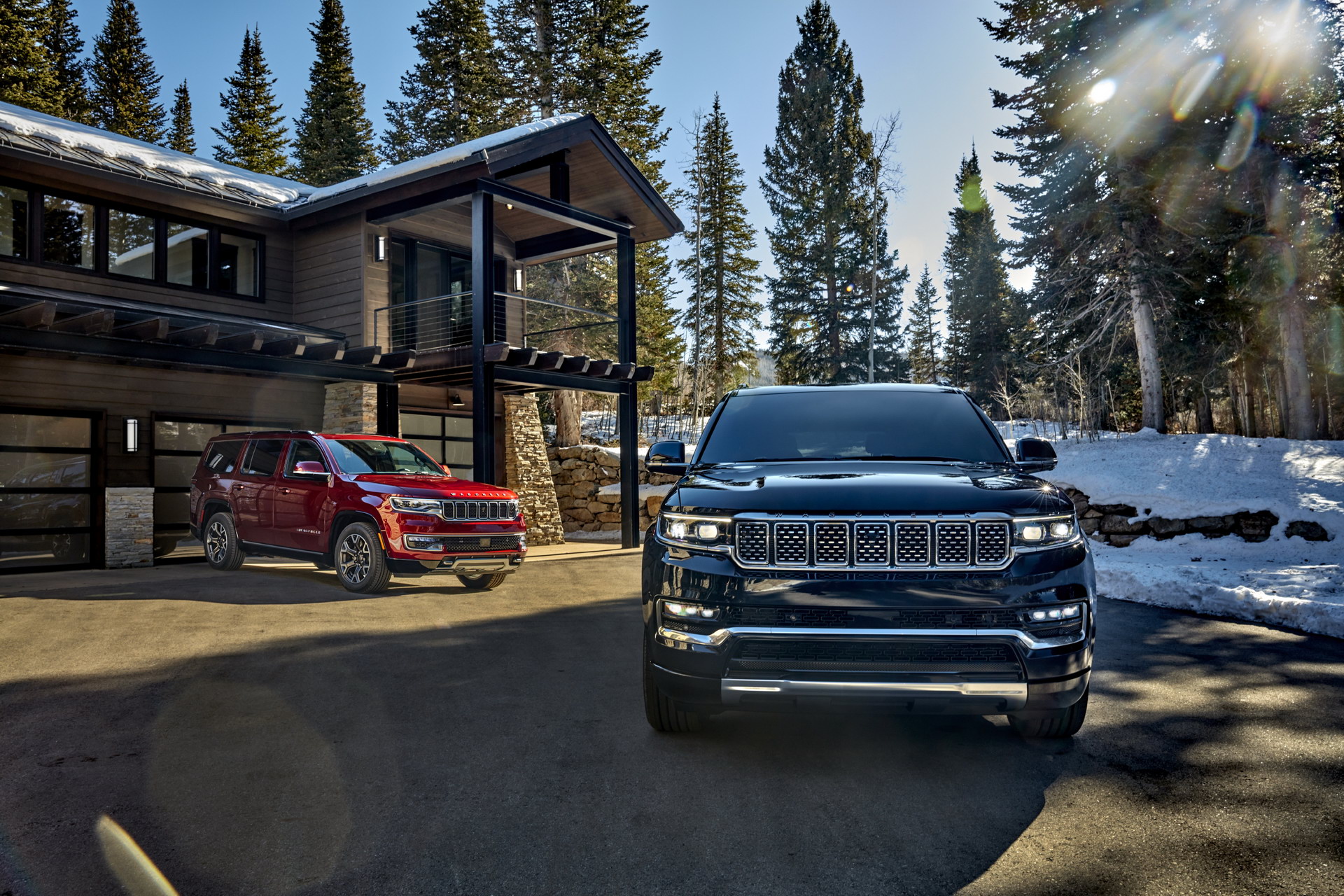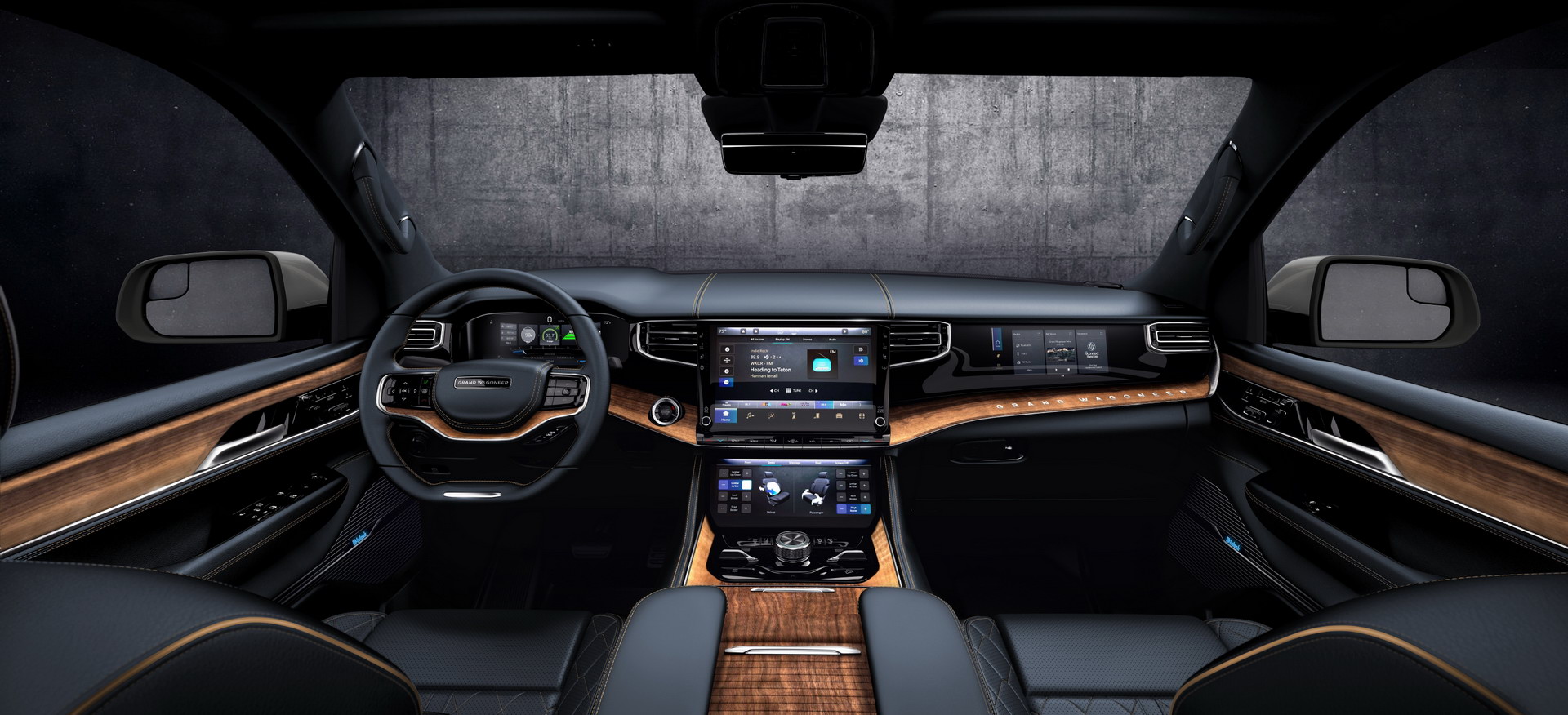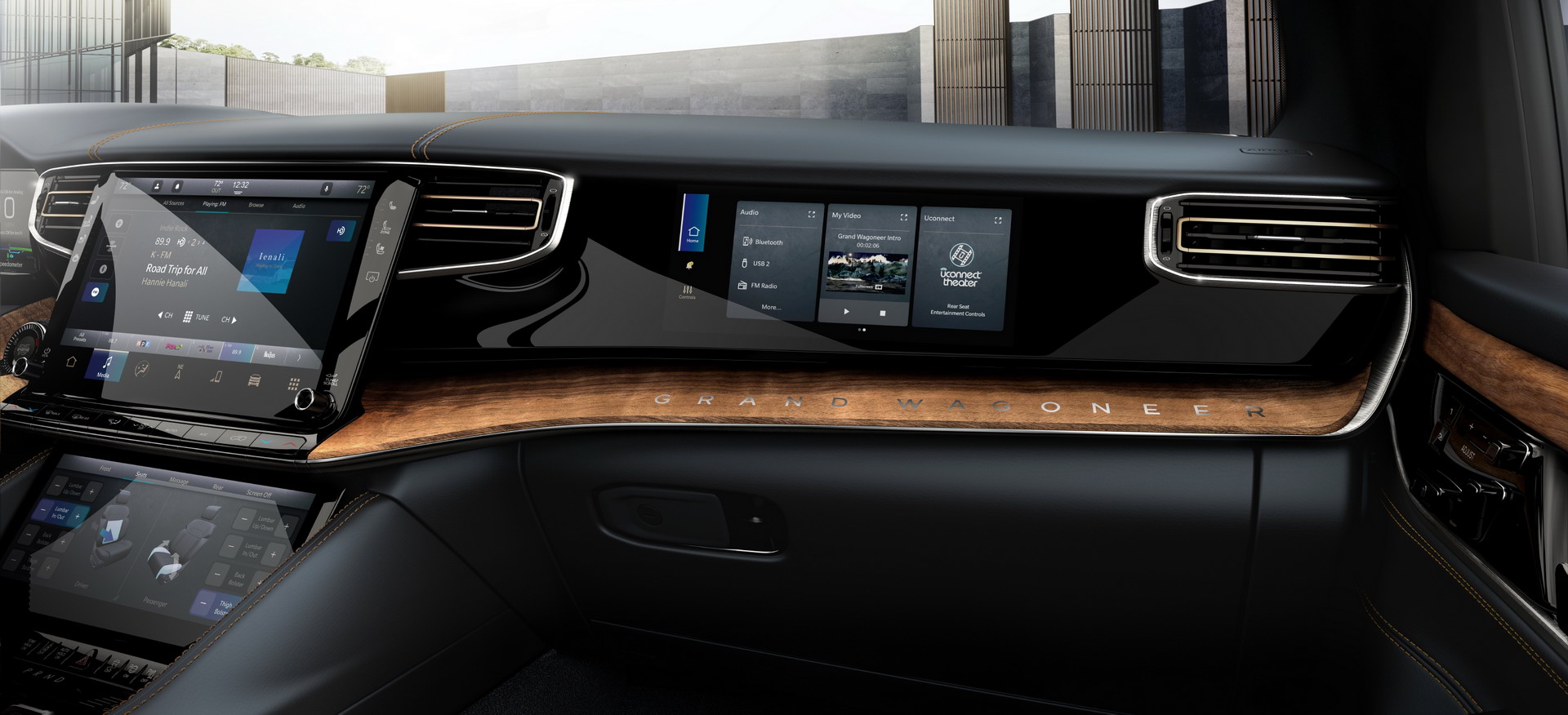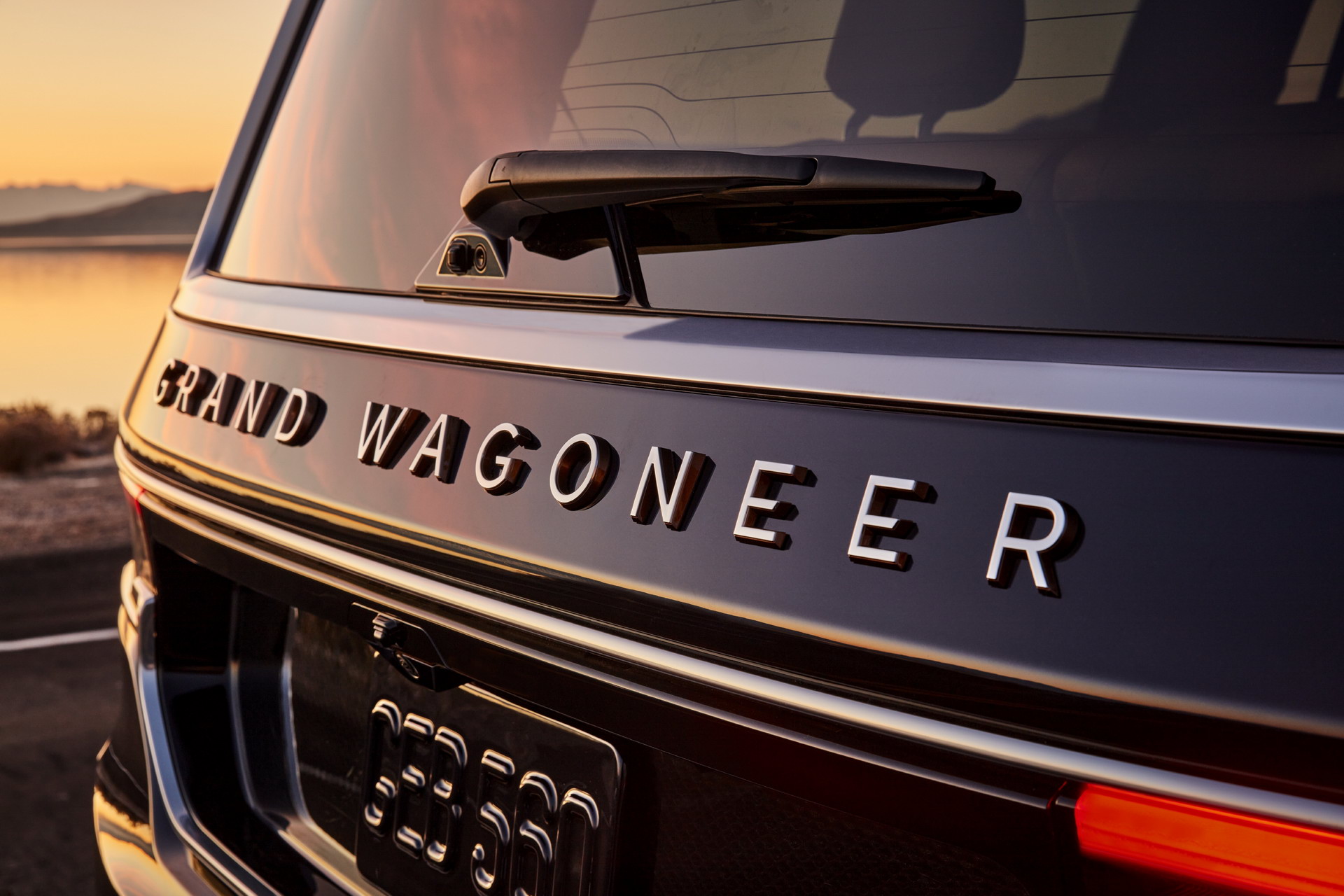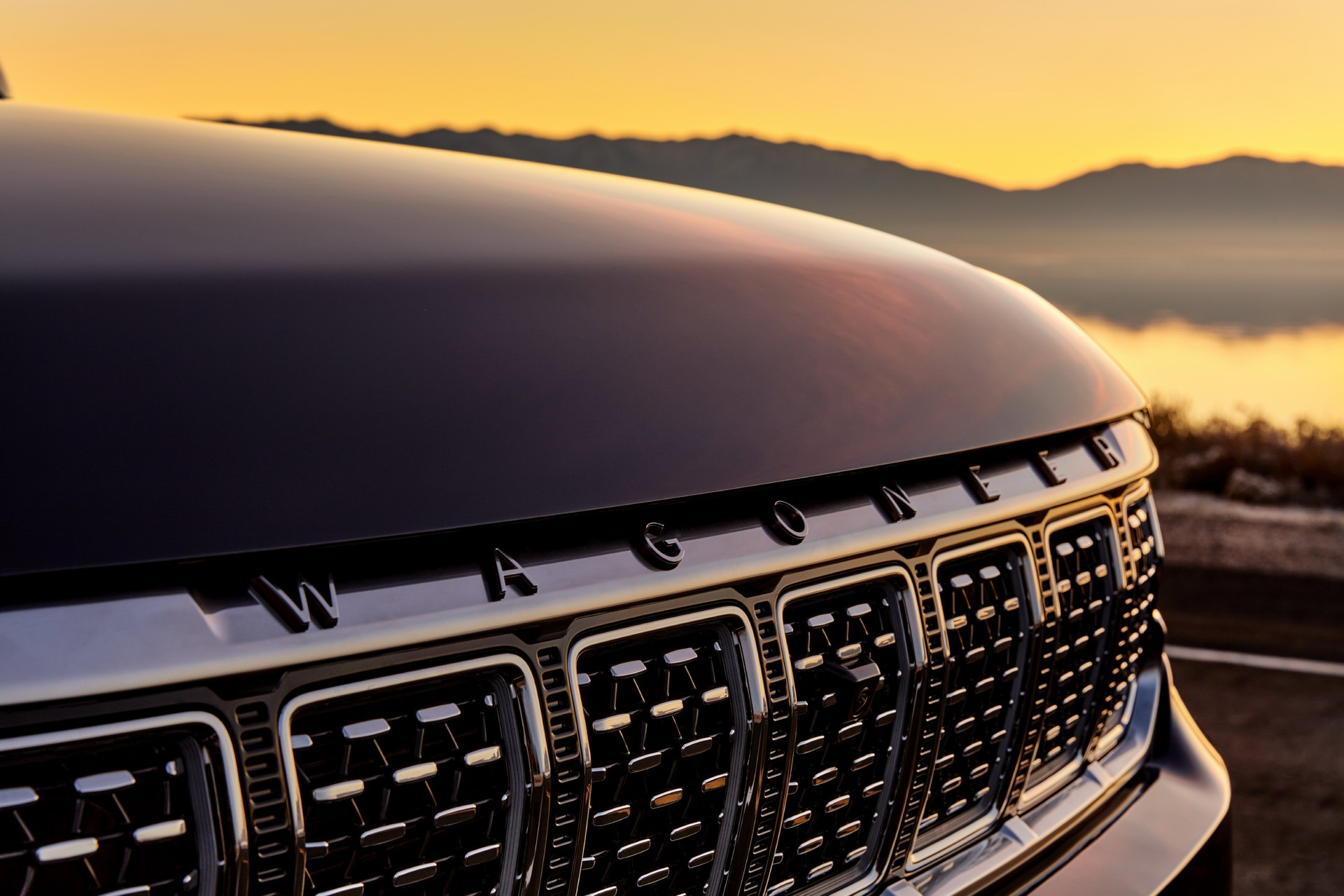Say hello to the new 2022 Jeep Wagoneer and Grand Wagoneer. Despite the different names, both are the same size, with changes to the body, interior and of course, pricing, making the difference.
Both Jeeps are about 4.0-inches (10.2cm) taller, 6.3-inches (16 cm) wider, and 9.8-inches (24.9 cm) longer than the Grand Cherokee L. They’re bigger and heavier than their closest competitors too. The Wagoneer’s curb weight starts at 5,960 lbs (2,703 kg), with the Grand Wagoneer Series III weighing in at 6,420 lbs (2,912 kg). That’s heftier than a Cadillac Escalade or Lincoln Navigator.
Both will be available from the second half of the year, with the Wagoneer beginning from $59,995 with destination while the Grand Wagoneer climbs to a steep starting price of $88,995 with a $2,000 handling fee, placing it in Range Rover territory (from $92,000).
Wait, they’re the same size? Doesn’t the “Grand” equate to LWB or something?
No, not in the case of these two. But there are differences both inside and out. There may be extended wheelbase options offered later, but nothing of the sort exists for the moment.
Jeep says the Wagoneer, which is available in a 4×2 option for those who really don’t care about off-road ability, will compete in the heart of the SUV market. Think Chevy Tahoe or Ford Expedition, and you’ve got a good idea.
Meanwhile, the Grand Wagoneer will play with the big boys. It’s not only aiming for the domestic category of the Navigators and Escalades, but also the likes of the BMW X7 and Mercedes-Benz GLS.
Both the Wagoneer and the Grand Wagoneer have three rows of seats and utilize a ladder frame chassis.
So doesn’t that mean the Wagoneer is riding on a bedazzled Ram 1500 platform?
Erm, yes and no. Ask Jeep, and they’ll tell you that it’s basically a new platform. Reading between the lines, it likely shares much with the Ram pick-up but does have multi-link rear suspension to improve ride and handling.
Jeep says the body-on-frame chassis has been designed to use high-strength steel that bolsters performance, safety, and reliability while also reducing overall weight.
Ok, but I still don’t get what differentiates the two Wagoneers from each other.
Let’s break it down. Externally, the Grand Wagoneer gets a blingier appearance than the basic Wagoneer. There’s more chrome, swollen fender flares, a contrasting roof, and exclusive colors. Both the bonnet and the front grille are different, and the LED lighting has been altered too.
Getting into the Grand Wagoneer, you get power-retractable running-boards as standard. Once inside, you’ll notice a split twin-screen layout that you won’t find inside the normal Wagoneer. The seating layouts are different too. The Wagoneer comes with eight seats as standard, whereas the Grand Wagoneer comes with seven. The idea is that the plusher model gets individual captain’s chairs for the second row, although you can configure both models to have either the separated second row or a bench.
And yes, the Grand Wagoneer aims to feel more premium. You get nicer leather and more premium wood trim options. Not to mention the Grand Wagoneer-exclusive option of 24-way power front seats, four-zone climate control, and a premium McIntosh sound system.
That’s a lot to take in… How about you tempt me with some numbers?
Both Wagoneer and Grand Wagoneer feature V8 engines with cylinder deactivation and eight-speed automatic transmissions. The powertrains themselves do differ, though. The Wagoneer comes with a 5.7-liter electrified lump. It’s available in both two-wheel drive and four-wheel drive, although the 2×4 option won’t be available at launch. Power is 392 hp (292 kW) and 404 lb-ft (548 Nm) of torque.
The Grand Wagoneer ups the ante with a good ‘ol 6.4-liter V8 and standard four-wheel drive. It does 0-60mph (0-96km/h) in 6 seconds flat thanks to 471 hp (351 kW) and 455 lb-ft (617 Nm) of torque.
The Wagoneer can tow up to 10,000 lbs (4,536 kg), while the Grand Wagoneer’s heft means that it’s only rated to tow 9,860 lbs (4,472 kg).
Along with the rear-wheel-drive option, you can choose between two four-wheel drive systems that either have a single or two-speed transfer case — the latter being standard on the Grand Cherokee. You’re presented with five terrain modes with the four-wheel-drive systems, while the two-speed transfer system (Quadra-Trac II) offers an electronically-controlled limited-slip differential.
Ok, so two identically-sized premium SUVs, where one is literally “Grander” than the other? Anything else I need to know?
That about covers it. Oh, we may have forgotten to mention that the SUVs will be the first to incorporate Amazon Fire TV for Auto — so you can get Alexa to note something down while the kids watch Amazon Prime TV in the back. You also get the option of a front-passenger screen, the contents of which are shielded from the view of the driver thanks to a unique film. Nifty.






















